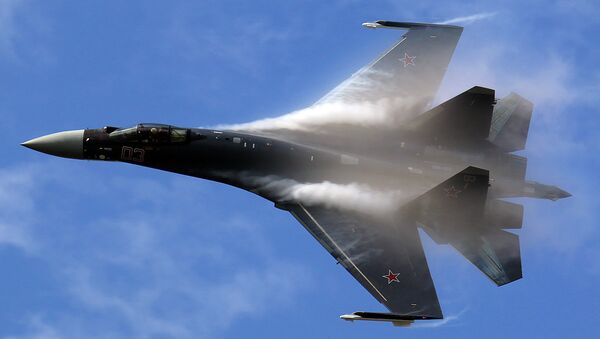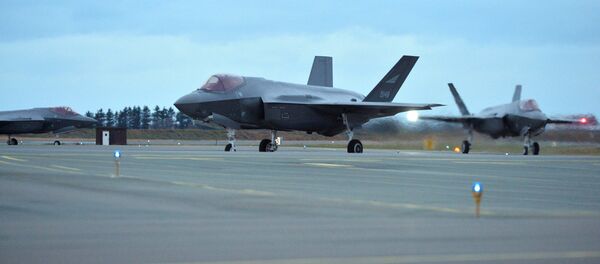Comparing warplanes is always fun, especially so when their names shared the same numerical index. Of course, there has never been a true encounter between an F-35 and any Russian plane, and, with a little luck and a lot of patience, there never will be, so read on as a matter of speculation only.
The first answer contained within their article "Russia's Su-35 vs. America's Stealth F-35: Who Wins?" observed that "The most likely answer is that they would change course and call in the F-22 Raptors and F-15Cs, which are tasked with gaining and maintaining air superiority."
"Meanwhile, the F-35s would go on their merry way to their assigned targets," added the authors.
What data do they have to support their claim? The Su-35, not yet a completely fifth-generation warcraft, is a heavily upgraded version of the dependable Su-27 Flanker, which first took flight way back in 1977. It should be noted that the upgrades include new avionics, new engines and even a modified airframe — something which usually denotes a new model.
The Su-35 is capable of reaching Mach 2.25 at high altitudes and Mach 1.13 at sea level, on par with the US F-22 Raptor fifth-generation plane. The F-35, on the other hand, "can just barely touch Mach 1.6 in full afterburner," Scout reports.
"Whereas a four-ship flight of Raptors cruising at high supersonic speeds in the rarified atmosphere above 50,000 feet can effectively choose when and where to fight, a flight of slower, lower-flying F-35s might find themselves forced to react to better-performing enemy planes if they are not careful," the website asserted.
Slower speed means less missile launch energy which, in turn, means a shorter attack range. Scout noted that the F-35 is not capable of carrying as many air-to-air missiles as the F-22.
And with AIM-9X, a much shorter-range missile intended for dogfights, the F-35 in its stealth configuration does not carry any at all.
The F-35's AIM-120 AMRAAM long-range missiles, capable of beyond-eyesight engagement, are also susceptible to radio jamming.
"If forced into a dogfight, an American F-35 pilot's superior skills and experience might be the only factor that might save him or her from being shot down," the website claimed.
"Basically, an F-35 pilot should avoid a close-in fight at all costs."
Remarkably, what the F-35 also lacks is maneuverability. All in-service US fighter jets can outrun the F-35 in terms of maneuverability — including the older machines such as F-16 or even F/A-18 Hornets. The only thing the F-35 can rely upon is its stealth and high tech sensors. If a pilot is lucky, he or she might conduct a surprise AMRAAM attack from beyond the visible range.
But Scout, as a result of its well-intentioned thought experiment, recommends that F-35s just cloak themselves and give those Russian planes a wide berth.



